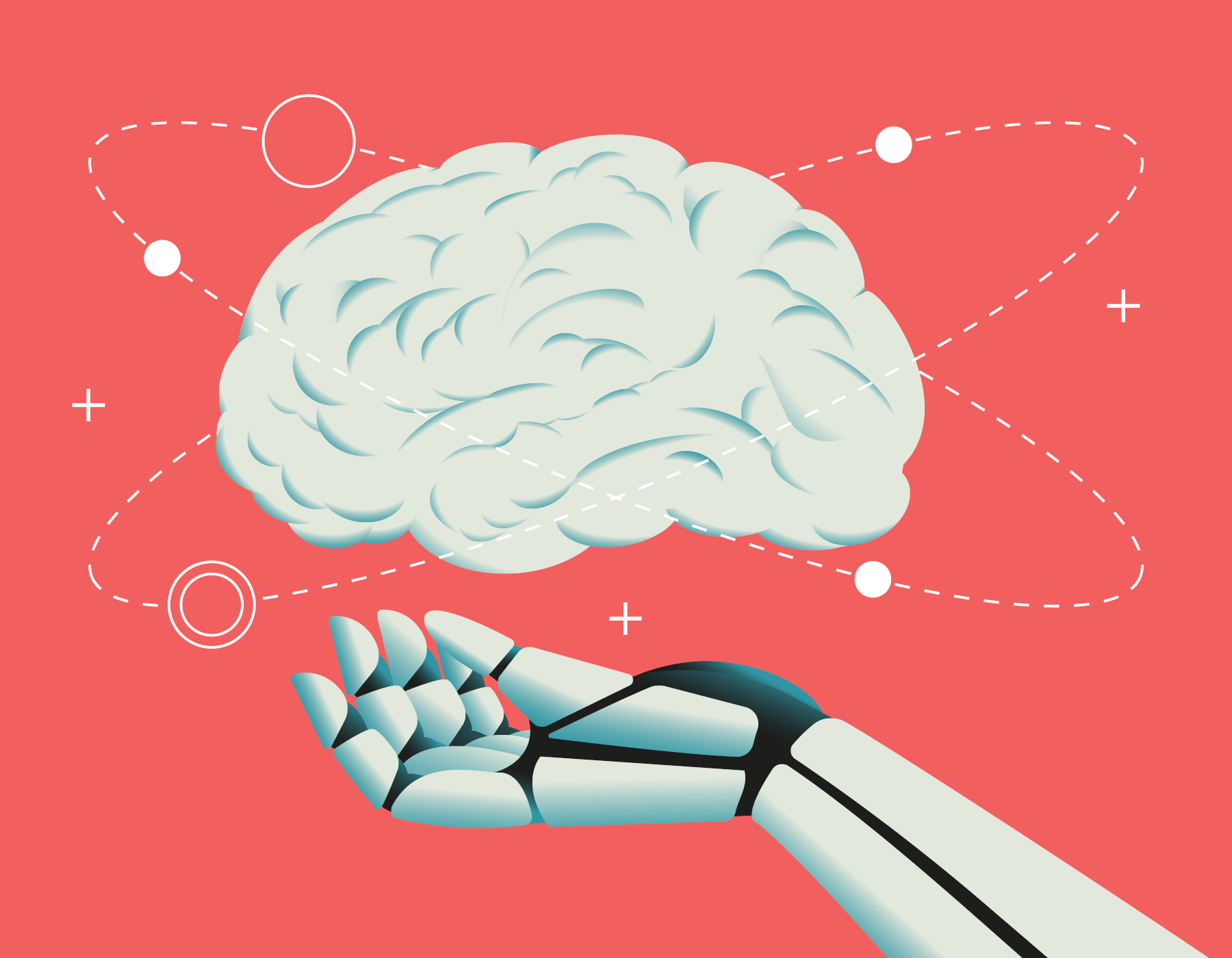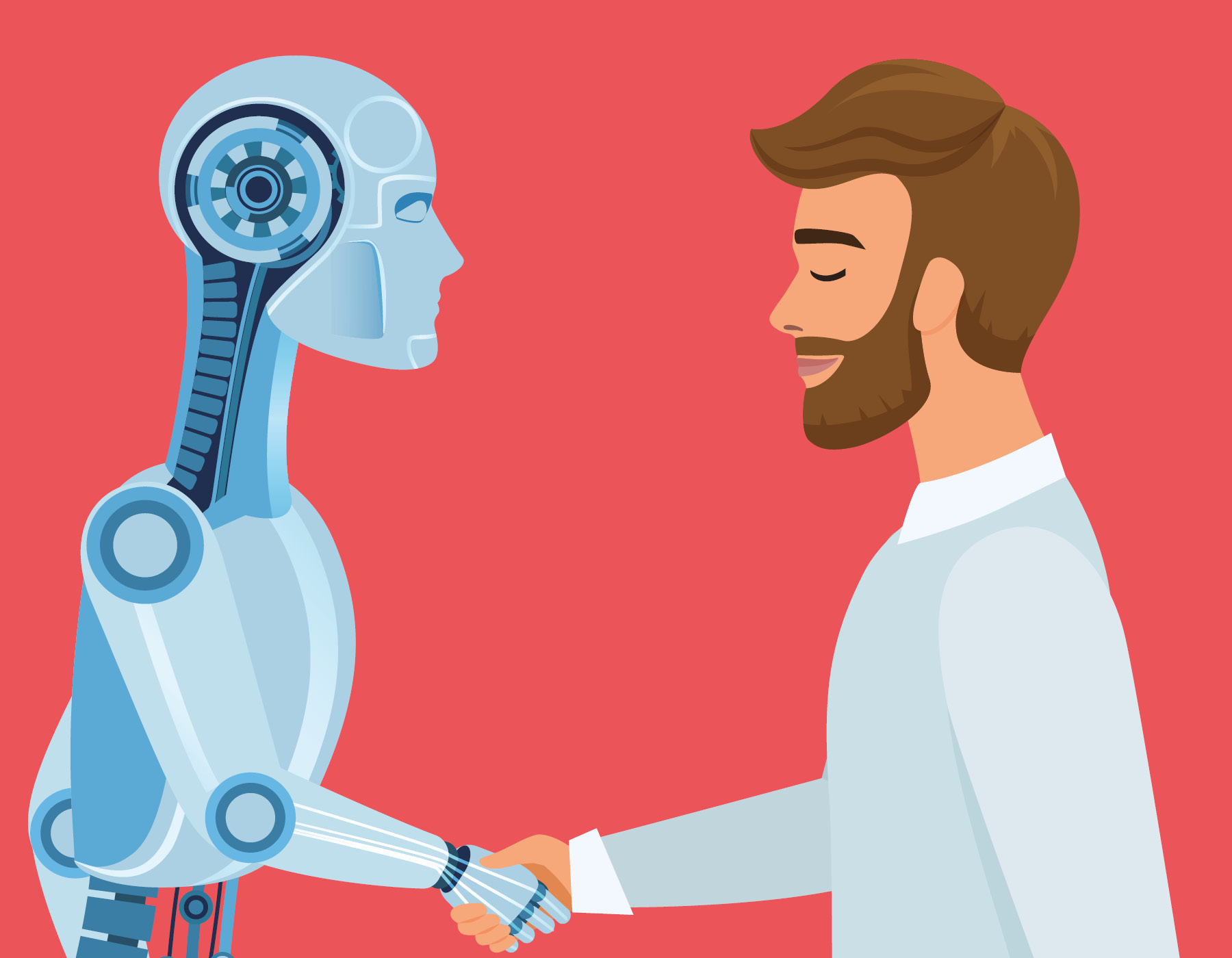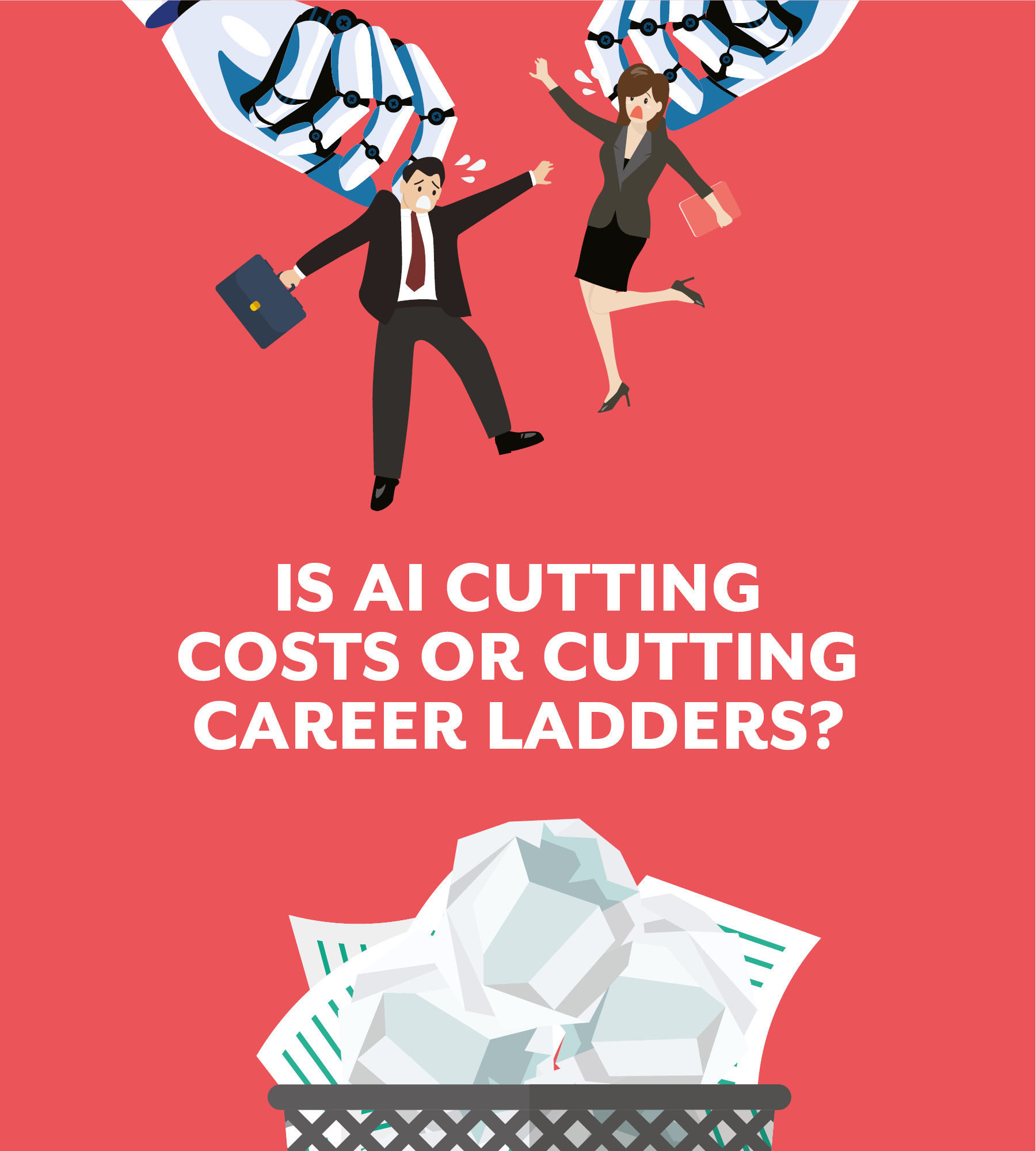Language
You can read the magazine in one of the following languages
AI dominated conversations around the future of work and the global economy during the World Economic Forum’s meeting in Davos in January. While the business community’s excitement about maximizing AI’s potential is obvious, there is also a deep undercurrent of concern around the technology’s impact on skills training and entry level jobs.
A PricewaterhouseCoopers pre-Davos survey of global CEOs, released during the meeting, makes this quite clear: nearly half of CEOs surveyed don’t think their companies will survive the next decade, barring significant changes, due to pressures like AI.
While most said they want to use AI to streamline their business operations, they are concerned their workers don’t have the training to use it.
“Therefore, what you do need is even better skilled people,” Juergen Mueller, SAP’s Chief Technology Officer, told Reuters.

Will businesses, in their eagerness to embrace automation and cost savings, inadvertently impair the capabilities of our future workforce?
I couldn’t agree more, but his statement also highlights the precarity of the situation we’re in right now: how businesses choose to implement AI and tackle this skills gap could have ramifications for businesses and workers for decades to come.
For businesses, the stakes are high: a wide and diverse talent pool is the cornerstone of innovation, operational efficiency, competitive advantage and sustainable growth. In their rush to implement AI and automate entry level roles, companies could lose the developmental benefits that these positions traditionally provide businesses and workers, which are crucial for organizational growth and career progression.
Today, AI frequently serves as a tool for generating initial drafts, setting the stage for users to use what makes sense and rectify inaccuracies. This critical evaluation and improvement of AI outputs are predominantly managed by mid- and senior-level employees, whose expertise stems from skills honed in the earlier stages of their careers.
However, this raises a crucial question: if AI-driven automation supplants these roles, who will oversee and ensure the accuracy of AI’s work in the coming years? Will businesses, in their eagerness to embrace automation and cost savings, inadvertently impair the capabilities of our future workforce and risk creating a substantial skill deficit that hurts the business in the long run?

Who will oversee and ensure the accuracy of AI’s work in the coming years?
This is a problem for businesses as well as workers. While businesses might see short-term cost savings, the long-term impact on workforce development and the company’s financial health could be detrimental. It would be as if a baseball team shut down its farm team to save money and were then surprised several years down the road when their Major League team lacked skilled players.
We’ve seen this in practice at the nonprofit, Climb Hire. Last year, we piloted an AI resume writing program to help improve the job prospects of our participants, or ‘climbers’. These climbers had little experience with the components of a strong resume and that, combined with limited exposure to AI tools, led them to struggle generating prompts that would create a quality resume.
As a result, the resumes they produced were lackluster. What’s more, they repeated the AI-generated language in interviews, which gave a poor impression, leading to missed job opportunities. This scenario shows how important training employees on AI is.
Eliminating entry level positions by handing them off to AI would eliminate a crucial pathway into the workforce as well, especially for those coming from non-traditional backgrounds like those I work with. These folks may not have advanced training or even advanced degrees, but they do have talent. Yet, without entry level jobs and on-the-job learning, they would not be able to get onto the first rung of the career ladder.
Entry into the working world would be restricted to those who can afford to obtain higher levels of training or education. And data shows narrowing the hiring funnel in those ways is bad business: companies that focus on skills instead of degrees get three times as many suitable candidates and have a 93 percent employee retention rate, among other benefits.

Companies should invest in reskilling and upskilling programs, ensuring that their employees, especially those at the entry level, are equipped to thrive in an AI-augmented workplace.
This brings me back to Mueller’s insight about the need for better skilled individuals. Navigating the technological transformation requires a balanced approach: harnessing AI for operational efficiency while recognizing entry level positions serve their business interests by providing vital training grounds to nurture future managers deeply attuned to the company’s needs.
Companies should invest in reskilling and upskilling programs, ensuring that their employees, especially those at the entry level, are equipped to thrive in an AI-augmented workplace. The adoption of AI in business should not be a zero-sum game where technological advancement comes at the cost of workforce development.
The decisions made today by business leaders will shape the workforce of tomorrow. It is imperative that these decisions are guided not only by financial considerations but also by a commitment to long-term sustainability. In this way, we can ensure that the benefits of AI are widely distributed and that the future of work is accessible to all, regardless of background or education level.

Nitzan Pelman
Contributor Collective Member
Nitzan Pelman is a three-time social impact entrepreneur and the CEO of Climb Hire, a national upskilling nonprofit that helps low-income and overlooked working adults break into new careers. She founded Climb Hire in 2019 as a way to create economic opportunity and mobility for people earning below a livable wage. Climb Hire’s program model is based on Nitzan’s firsthand research as an Entrepreneur in Residence at LinkedIn on the powerful role that social networks can play in securing living wage jobs. Nitzan is an Ascend Fellow with the Aspen Institute and is an official LinkedIn Influencer. For more information, go to https://climbhire.co/
